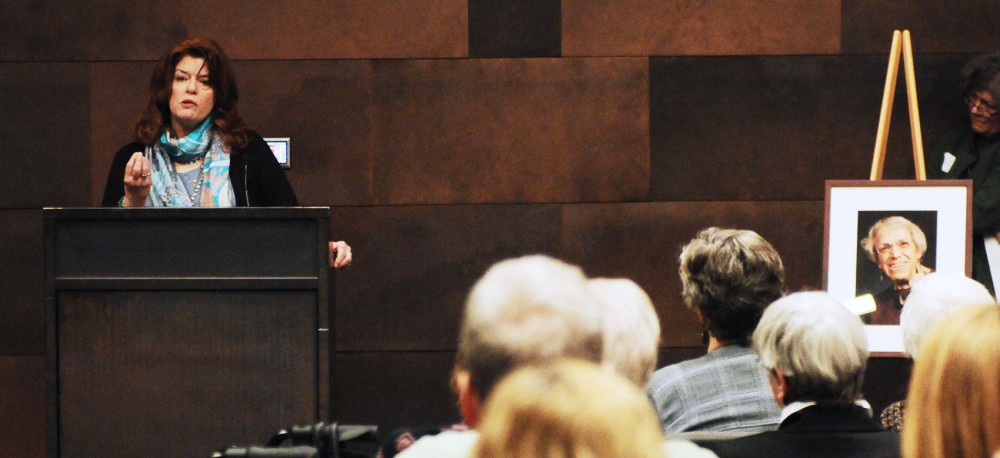The late champion of equity for women, Anne Thorsen Truax, was honored at a memorial service Thursday by friends, family and colleagues. She died Oct. 31, 2012, at age 87.
From 1971-91, Truax served as director of the University of Minnesota’s Women’s Center and ended her career in the Office of Equal Opportunity and Affirmative Action.
Throughout her time at the University, Truax was heavily involved in the women’s rights movement — from supporting gender equity at the University to teaching the first women’s studies course — which her colleagues recounted at the memorial.
Attendees filled the room in the McNamara Alumni Center on Tuesday night. After the planned speakers had finished, several others stepped up to share their thoughts and stories about Truax.
“Anne’s friends were many,” said University professor Ruth-Ellen Joeres, who was both a colleague and a close friend of Truax.
Truax was especially passionate about gender discrimination in education, employment and the legal rights of women, said Arvonne Fraser, senior fellow emerita of the Humphrey School of Public Affairs.
“Anne was just always in the thick of [feminist politics],” Joeres said.
Fraser said she worked with Truax in the Women’s Equity Action League to help pass Title IX in education, which opened up law, medicine, engineering and architecture to women.
Before Title IX was enacted in 1972, Fraser said, these programs either had quotas for women participants or simply did not take women at all.
Truax also helped provide data and evidence of discrimination when students filed a lawsuit under Title IX against the University in 1974, said Kathleen Kelly, who was a student in the first women’s studies class, co-taught by Truax.
“I am one of the legions of women who can say that Anne changed my life,” Kelly said. “I became a lawyer because of Anne.”
Among the findings students presented was evidence that men received more financial aid than women and that professional schools used female admission quotas. Women also needed a B average to be admitted while men needed only a C-average.
“While she may have given this University trouble, she revered this great institution,” Fraser said. “She had opponents but never enemies.”
The lawsuit came soon after a 1973 suit in which faculty member Shyamala Rajender sued the University’s Department of Chemistry for gender discrimination after she was denied a tenure-track position. After the University lost the suit, women’s salaries were adjusted to be more equitable, said Ann Pflaum, a University historian.
In addition to helping Rajender during her case, the Women’s Equity Action League also helped open up the Rhodes Scholarship to women, Fraser said.
In 1990, Truax worked with Janet Spector and Patricia Mullen to move forward a plan offering courses and advising to women seeking to enter or re-enter higher education, Pflaum said. The University has offered a women’s leadership scholarship in their names since 1997.
Besides gains in education equity, Fraser said she and other activists witnessed the explosion of women back into the workforce.
“We sort of had a revolution — peaceful, that is — but there’s still a lot to be done,” she said, naming pay equity as an example.
Current director of the Women’s Center Peg Lonnquist spoke similarly.
One of the things the Women’s Center continues to work on, Lonnquist said, is providing support for women in science, technology, engineering and mathematics. She also said there’s a focus on aiding women of color.
“I think the University is doing a lot of things positively,” Lonnquist said, “and there’s more left to do.”


